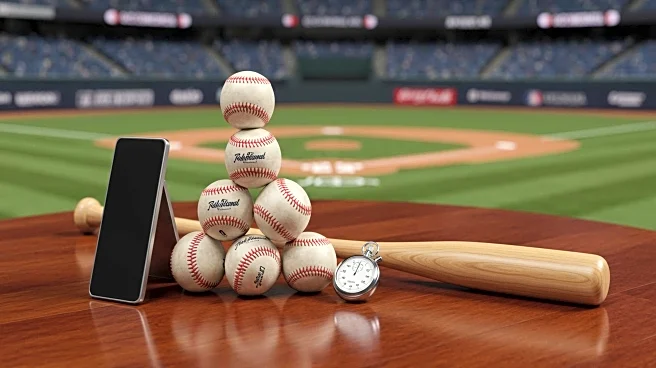What is the story about?
What's Happening?
The MLB trade deadline on July 31 witnessed a flurry of activity with 50 trades occurring in the final 31 hours. Teams were categorized as buyers, sellers, or 'middlers,' a term for teams that neither committed to buying nor selling. Notably, the San Francisco Giants, Los Angeles Angels, and Boston Red Sox adopted this middler strategy, with mixed results. The Giants and Angels have struggled, while the Red Sox have seen success. Nine teams, including the Los Angeles Dodgers and New York Yankees, were identified as full buyers, trading prospects for immediate talent to enhance their playoff chances. Conversely, teams like the Arizona Diamondbacks and St. Louis Cardinals acted as sellers, trading established players for future prospects.
Why It's Important?
The trade deadline is a pivotal moment for MLB teams to reshape their rosters and strategies. The decisions made can significantly impact a team's performance in the current season and their future prospects. For buyers, the risk involves sacrificing future potential for immediate success, while sellers aim to rebuild for future seasons. The emergence of middlers reflects a strategic indecision that could lead to long-term consequences. The outcomes of these trades will influence team dynamics, fan engagement, and the competitive landscape of the MLB.
What's Next?
As the season progresses, the effectiveness of these trade strategies will become clearer. Teams that acted as buyers will be scrutinized for their playoff performance, while sellers will focus on developing their new prospects. The middler strategy will be evaluated based on the teams' ability to improve their standings. The trade deadline's impact will also be analyzed in terms of its influence on team morale and management decisions.
AI Generated Content
Do you find this article useful?











